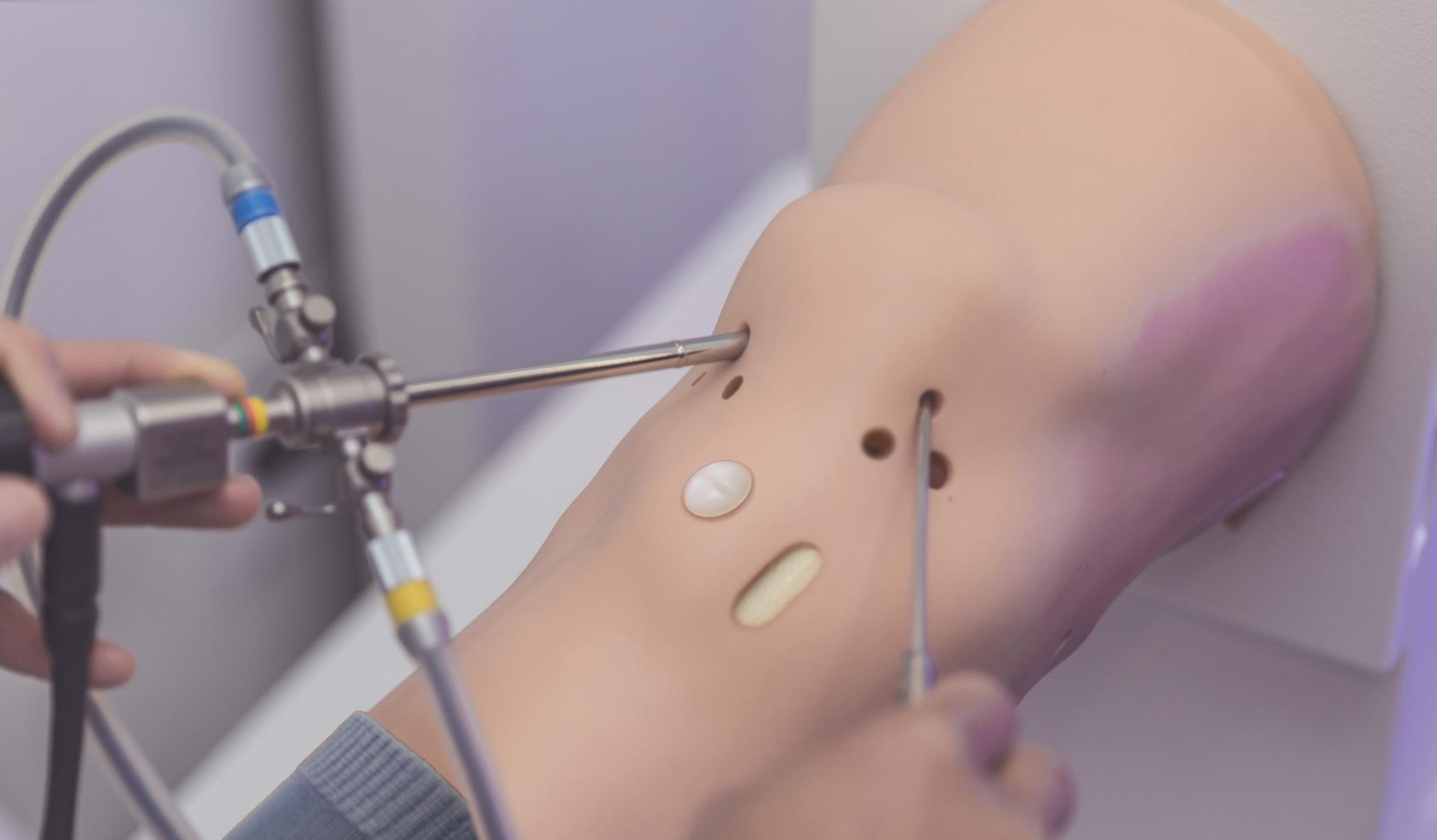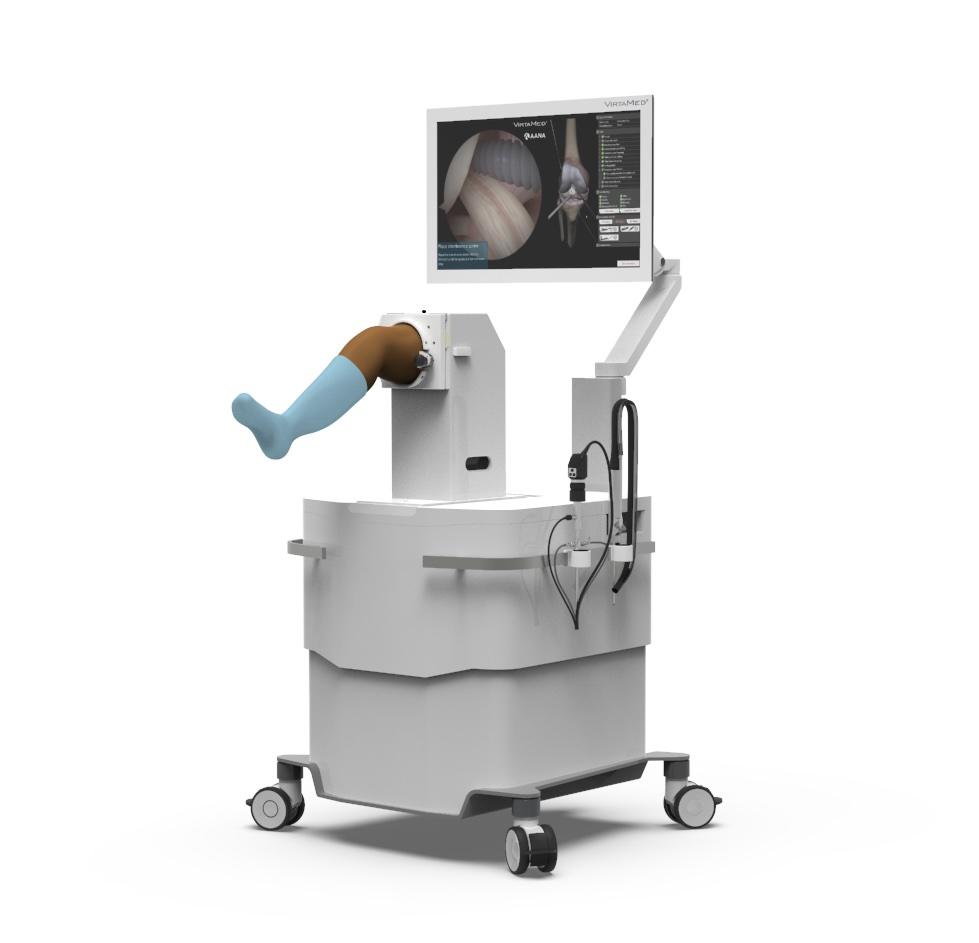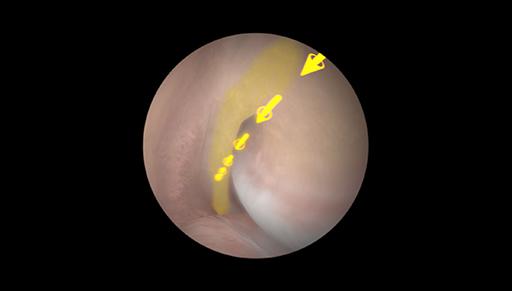
ArthroS™ Knee
More than 50 cases from basic diagnostic arthroscopy to the most advanced meniscal repair techniques
About the module

Trainees learn the basics of knee arthroscopy, perform complete diagnostic arthroscopies, and carry out smaller surgical interventions on patient cases with different pathologies. An anatomical knee model with soft skin allows for physical manipulation of the knee joint, including varus and valgus, flexion, extension, hip flexion, hyperflexion, and figure 4.
Relevant Knee Arthroscopy Training

From basic skills and guided diagnostic arthroscopy to therapeutics
Learn instrument handling and triangulation skills while avoiding cartilage damage. Learn to visualize relevant structures with an arthroscope, palpate them with a probe, and resect them with a punch and shaver. Helping elements such as colors and arrows guide you through the case. Treat simple meniscus lesions, combined arthrosis and tears, synovitis, loose bodies. Objective feedback reports provide learners with essential information on how well they performed the procedure and which aspects to focus on next time.
ACL reconstruction module
The ACL Reconstruction Module is an advanced add-on to the ArthroS™ Knee module. It contains learning content to practice and perform an anatomical ACL reconstruction via the anteromedial portal with a bone-patellar tendon-bone BTB graft and interference screw graft fixation. Cases were designed in collaboration with the Arthroscopy Association of North America (AANA) and use a proficiency-based progression training model.
Meniscal repair module
The Meniscal Repair module is an advanced add-on to the ArthroS™ Knee module. It contains learning content to practice and perform a range of techniques to repair the damaged meniscus, such as the all-inside and outside-in techniques for peripheral or radial tears, and more advanced repair techniques for meniscal root and ramp tears. The module was designed in collaboration with Prof. Dr. med. Romain Seil.
Factsheets & validation
Get more details about the most realistic arthroscopy simulator.